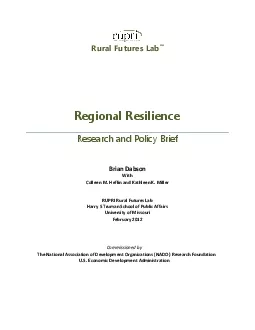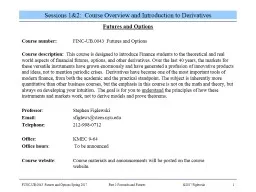PDF-Rural Futures LabRegional ResilienceResearch andPolicy Brief
Author : priscilla | Published Date : 2021-09-27
Brian DabsonWithColleen M Heflin and Kathleen K MillerRUPRI Rural Futures LabHarry S Truman School of Public AffairsUniversity of MissouriFebruary2012Commissioned
Presentation Embed Code
Download Presentation
Download Presentation The PPT/PDF document "Rural Futures LabRegional ResilienceRese..." is the property of its rightful owner. Permission is granted to download and print the materials on this website for personal, non-commercial use only, and to display it on your personal computer provided you do not modify the materials and that you retain all copyright notices contained in the materials. By downloading content from our website, you accept the terms of this agreement.
Rural Futures LabRegional ResilienceResearch andPolicy Brief: Transcript
Download Rules Of Document
"Rural Futures LabRegional ResilienceResearch andPolicy Brief"The content belongs to its owner. You may download and print it for personal use, without modification, and keep all copyright notices. By downloading, you agree to these terms.
Related Documents














